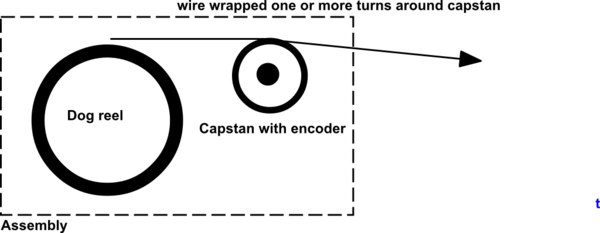I need to know how I can attach a rotary encoder to something string/wire that I can pull and it retracts automatically
My idea was to take apart a retractable dog lead leash and affix it to it somehow, but I'm not seeing how I could make that work.
I've included a picture of the dog leash(right) and the rotary endoer(left).
The only goal here is to measure distance/velocity of a retractable string/wire. I'm not tied down to using a dog leash or rotary encoder, open to any suggestions.
Is there any other solutions that are not very expensive?




